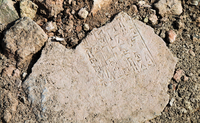
Lead Image © sergey Mayorov, 123RF.com
Managing BitLocker with PowerShell
Babylonian Letters
Encrypting drives on Windows in user circles is still not as widespread as is prudent from a security perspective. Especially for mobile systems such as notebooks, hard drives should be secured with a transparent encryption solution such as BitLocker so that data is protected, even if a thief removes the hard drive and attempts to access it. System administrators should seriously consider taking advantage of the option to automate the setup and configuration of hard drive encryption.
This is where PowerShell comes into play. Microsoft provides command-line tools and matching cmdlets in the form of manage-bde and repair-bde. Both the PowerShell cmdlets and command-line commands let you handle all the tasks and settings that are supported through the control panel. Although the BitLocker setting is now linked in the new system settings in the pre-release version of Windows 11 and version 21H2 of Windows 10, it still takes you to the settings in the legacy Windows interface from the pre-Windows 10 era.
You are better advised to use the command line and PowerShell. We tested the examples in this article both with version 5.1, which is currently installed on Windows systems by default, and with the open source variant PowerShell 7 on Windows 10 and Windows Server 2019 computers. BitLocker cmdlets and options were not different between systems.
Adding Encryption
BitLocker is not available on the current Windows 10 Home version. The device encryption software is available by default on Windows 10 Professional or Enterprise but usually has to be enabled. Exceptions include, say, Surface devices by Microsoft – the same type of encryption is automatically enabled there.
The server versions of Windows also support the use of drive encryption. However, for the server operating systems, you need to install BitLocker as a feature in Server Manager or the new
...Buy this article as PDF
(incl. VAT)
Buy ADMIN Magazine
Subscribe to our ADMIN Newsletters
Subscribe to our Linux Newsletters
Find Linux and Open Source Jobs
Most Popular
Support Our Work
ADMIN content is made possible with support from readers like you. Please consider contributing when you've found an article to be beneficial.







